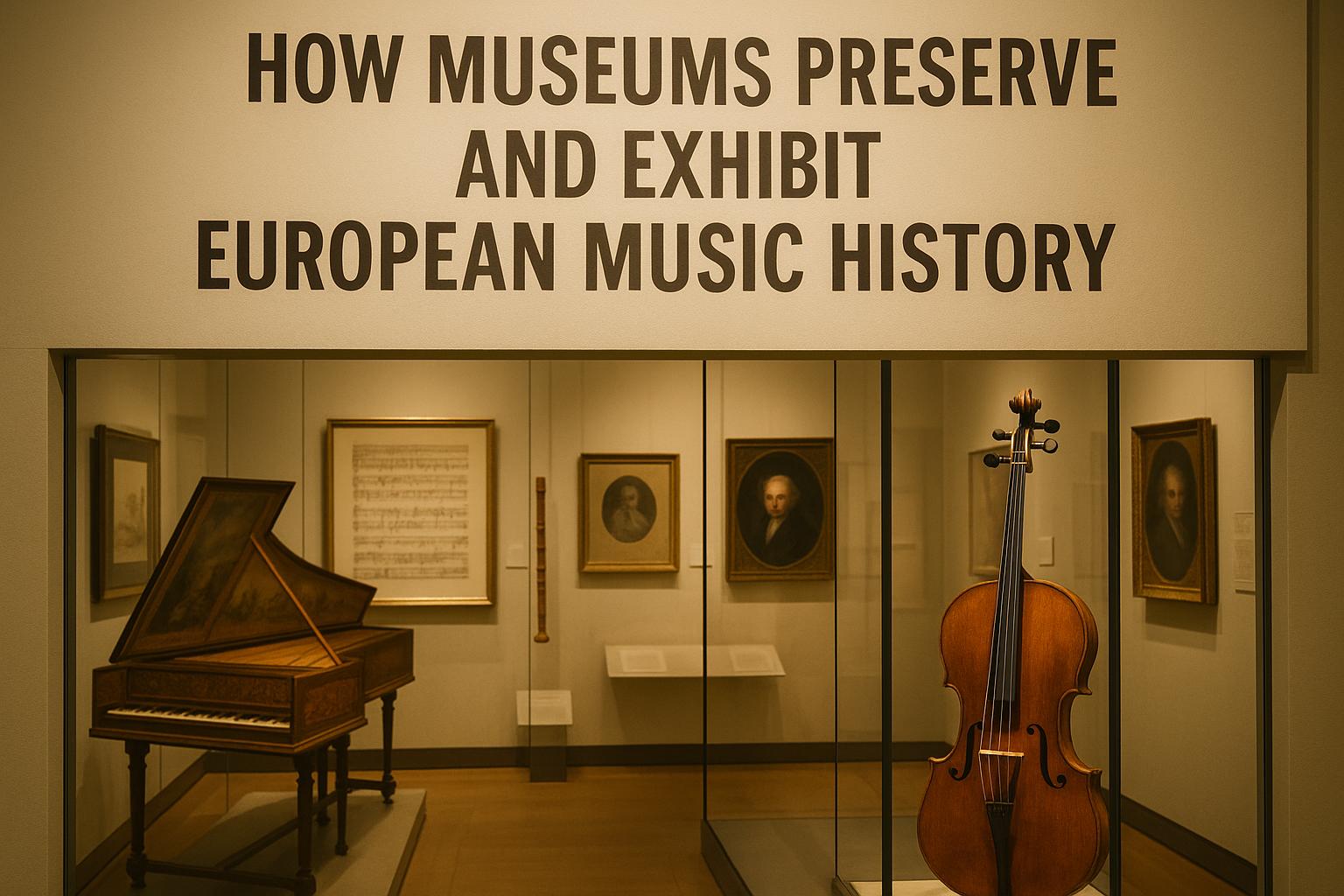Introduction to Preserving European Music History in Museums
Museums play a crucial role in preserving and exhibiting the rich history of European music. Through their collections, they provide insights into the cultural, social, and technological developments that have shaped the continent’s musical landscape. European music history encompasses a wide range of genres, instruments, and influential figures, making it a significant aspect of cultural heritage. Museums not only house these treasures but also ensure their stories are told to future generations.
Exhibiting Music Manuscripts and Scores
One essential method museums utilize to showcase European music history is through the exhibition of music manuscripts and scores. These artifacts serve as primary sources for understanding the works of composers and the evolution of musical notation. Original scores by renowned composers such as Beethoven, Mozart, and Bach are often key highlights in these exhibitions. The display of such manuscripts offers visitors a glimpse into the creative process and the historical context in which these works were composed.
Music manuscripts provide a tangible connection to the past, illustrating how compositions were initially conceived and notated. This intimate view into the artistry of composers reveals how pieces of music were often subject to revision and reinterpretation over time. Moreover, the physical characteristics of the manuscripts, such as the type of paper and ink used, can offer additional contextual information about the era and environment in which they were produced.
Preservation Techniques
The preservation of music-related artifacts requires specific techniques to ensure their longevity. Museums employ climate-controlled environments to protect delicate paper, ink, and parchment from deterioration. Continuous monitoring of temperature and humidity levels is critical to prevent damage caused by mold or excessive dryness. Digitization is another crucial method, allowing these historical pieces to be preserved in digital format, thus reducing the need for physical handling. Digital archives also broaden accessibility, allowing enthusiasts and researchers worldwide to explore European musical heritage.
The process of digitization involves scanning documents and creating high-resolution images that can be accessed online. This not only aids in preservation but also democratizes access to rare and fragile items. Researchers and music lovers can examine these artifacts without geographical limitations, fostering a more profound appreciation and understanding of the musical heritage of Europe.
Furthermore, conservators also engage in restoration activities to repair any existing damage while being meticulously careful to preserve the original integrity of the pieces. This involves using specialized materials that match with the historic items’ period to maintain authenticity.
Interactive and Multimedia Exhibits
To enhance the visitor experience, museums incorporate interactive and multimedia exhibits. These installations offer a dynamic approach to learning by providing opportunities to engage with the material audiovisually. For instance, touchscreens may allow visitors to view historical performances or listen to recordings of compositions from various periods. This interactive engagement enriches the educational aspect of museum visits.
Through multimedia presentations, visitors can explore everything from the acoustics of historical concert halls to the evolution of musical styles. Audio guides and interactive displays often feature narrations and analyses from contemporary musicians and historians, adding depth to the visitor’s understanding.
Museums may also integrate augmented reality (AR) technology to reconstruct historical events or stage settings, offering an immersive learning experience. This allows visitors to witness imagined reconstructions of early concerts or view virtual renditions of operas as they might have appeared in earlier centuries.
Collections of Instruments
Another critical aspect of exhibiting European music history involves the display of historical musical instruments. Museums curate collections that include instruments from different eras, regions, and musical traditions. By showcasing instruments such as the harpsichord, lute, and early pianofortes, museums illustrate technological advancements and variations in design. These displays often include detailed explanations of the instruments’ construction and their role in historical music-making.
Instrument collections provide insight into how music was played and heard in past eras, reflecting changes in performance practices and cultural preferences. Visitors can understand the craftsmanship involved in instrument-making and how technological advances influenced the music composed for these devices. Museums may also feature audio recordings of the instruments in use, demonstrating their unique sounds and facilitating a more nuanced appreciation of their historical significance.
Educational Programs and Collaborations
Educational programs and collaborations with academic institutions are vital components of museums’ efforts to promote European music history. Workshops, lectures, and live performances provide context and deepen the understanding of the materials on display. These programs often tailor to a wide-ranging audience, from school groups to adult learners, ensuring engagement across age groups.
Moreover, museums may collaborate with researchers and musicians to develop exhibitions that appeal both to scholars and the general public. These partnerships expand the interpretative possibilities and highlight ongoing scholarly research. By working with universities and conservatories, museums can integrate the latest academic insights into their displays, enriching the visitor experience and fostering a robust dialogue between museums and the academic community.
Museums may also host residencies for musicians and composers, allowing them to create and perform new works inspired by historical collections. This initiative not only promotes contemporary creativity but also continues the legacy of European musical innovation.
Conclusion
Museums dedicated to preserving and exhibiting European music history offer invaluable insights into the continent’s musical traditions and innovations. Through careful preservation techniques, interactive exhibits, and educational initiatives, they ensure that this rich cultural heritage continues to inspire and educate future generations. Museums do not merely display historical artifacts; they engage with the public to share a deeper understanding of the dynamics that shaped European music. For more information on specific museum collections, consider visiting reputable museum websites where you can explore their offerings in greater detail.

